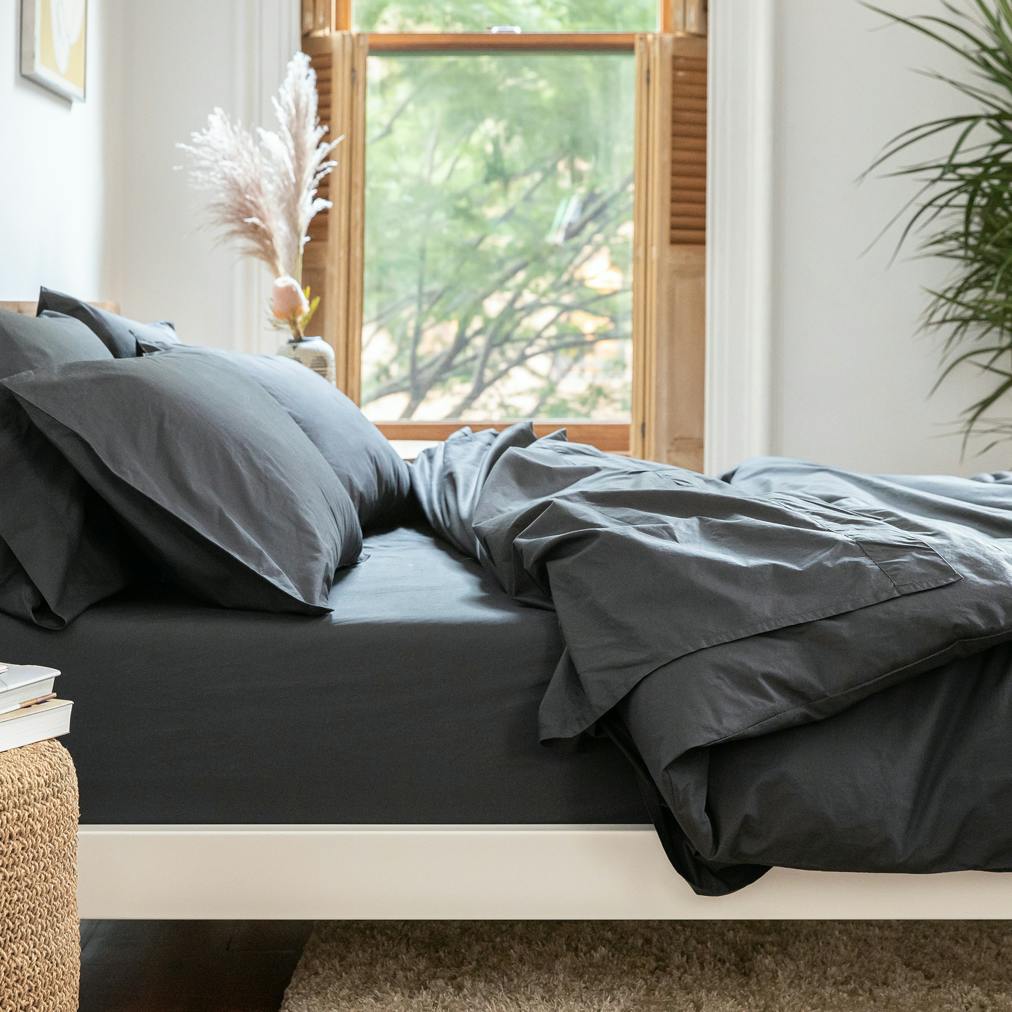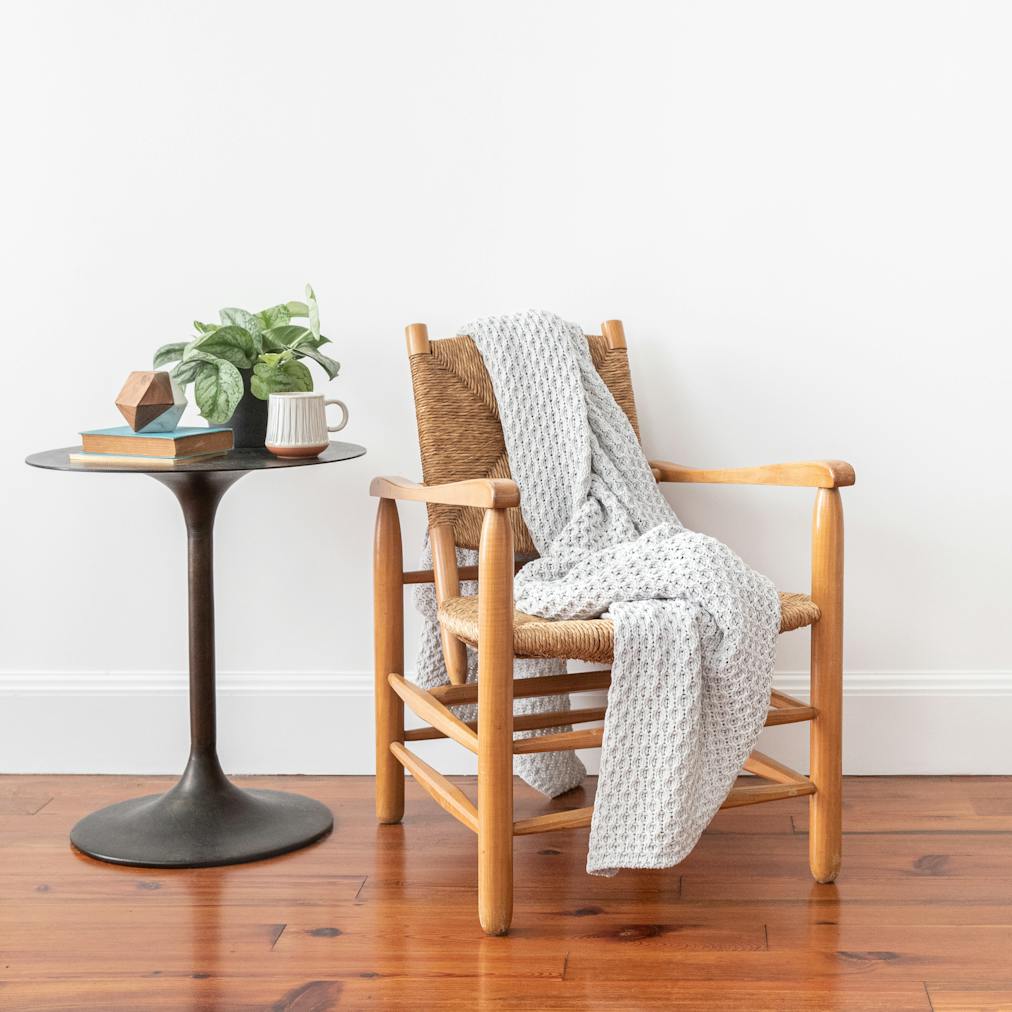
The Great Duvate: What is a duvet cover & what is the difference between a duvet and a comforter?
April 29, 2021
Author: Shelly Weaver-Cather
You’ve probably been in the Duvet vs battle before—which one is right? What is a duvet cover? What is a comforter? Is there even a difference between duvet and comforter? What are the pros and cons? Which one is better for your own needs? Do you have to rotate them out seasonally? Why does “duvet” have to sound so pretentious?
These are all excellent questions.
If you’re stuck trying to figure out if you should go for a duvet or comforter (or quilt, or bedspread, or coverlet, or whatever type of bedding), we’re here to help guide you on your journey.
So, let’s talk comforter vs duvet.
What is a duvet?
Let’s start with arguably the king of the bedding accessory crew, the fluffy, cozy, Instagram-worthy duvet. A duvet itself is cloth sewn together and filled to create a fluffy, warm, but lightweight feeling. Duvets are traditionally filled with down (the softest feathers on birds, valued because they don’t have sharp quills), but you can also choose poly-fills or other materials that are easier for those with allergies or who want to avoid animal products. A duvet is soft, whether it’s filled with down feathers or filled with synthetic fibers.
Duvets are designed to be inserted into a cover and are usually white. A duvet cover, meaning the material that slips over the duvet to protect it, as well as add to your bedroom aesthetic, can range in all sorts of designs and materials, making them easy to swap out when changing up your decor. Duvet covers are easily changed and machine washable.
Duvet inserts are also versatile when it comes to weight. Often, people have a heavier winter duvet and lighter summer duvet, or switch out to a thinner, cooler blanket (in some climates, just a top sheet will do). If you live somewhere with a milder climate, a light duvet will likely get you through all seasons perfectly, where if you live somewhere colder, a heavier duvet might be a better option.
What is the difference between a duvet and a comforter?
| DUVET COVER vs COMFORTER SIZES | |||||
| TYPE | Duvet Size (T&N) | Comforter Size (Other Companies) | |||
| Twin/Twin XL | 68”L x 88”W | 66”-68”W x 86”-88”L | |||
| Full/Queen | 98”L x 98”W | 81”-88”W x 86”-100”L | |||
| King/Cal King | 116”L x 98”W | 102”-110” x 86”-98”L | |||
“Duvet”, meaning “fluff” in French, is often interchanged with “comforter” though they aren’t quite the same. A comforter is one piece, which can mimic the feel of a duvet, but because a comforter doesn’t have a removable cover, it needs to be washed more often and doesn’t last as long. Duvets can be more of an investment piece, but because they are almost always covered by a washable material they last much longer.
Comforters can be made of down just like duvets, or a range of other materials. Some comforters are thinner and are better suited for warmer nights, whereas duvets are meant to keep you warm without adding a ton of weight. You can often buy a comforter set, which includes matching shams, or some retailers even offer a bed in a bag set that includes sheets and pillows.
And what about the rest? There are other options for bedding, of course, and it all boils down to personal preference. Here’s a handy glossary of all things bedsheets:
- Blanket A generic term that can mean a lot of things, but generally thinner and meant to keep you warm in milder climates.
- Coverlet Usually lightweight, quilted or woven non-reversible cover for your bed. In general, these are a decorative layer meant to go over heavier-duty bedding but can also be used alone.
- Duvet Insert A filled piece of bedding that typically covers the entire bed—top and sides. Can be filled with down, poly-fill, or more natural materials like cotton, but generally, a duvet cover a fluffy layer meant to be cozier and warmer than other bedding.
-
Duvet Cover Generally made to go with your sheets, duvet covers slide over a duvet insert and often have corner ties to attach so the insert doesn’t slide around. Duvet covers can be washed and serve to protect your duvet insert.

- Comforter A pre-filled blanket that is thicker than normal, and can often feel like a duvet without the versatility. Comforters are warm but don’t have a removable cover so they need to be washed or dry-cleaned frequently.
-
Quilt Often more decorative than typical bedding, quilts are usually three layers—a woven top and back cloth filled with a layer of batting. The stitching is intricate and they are often colorful and keep you just warm enough to be used all year long.

-
Throw Blanket Throw blankets usually are smaller—meant for one—and can add a decorative flair to your bed or your seating in living areas. They can be knitted, fleece, or woven and are great to have handy on chilly nights.

- Afghan Similar to a throw, an afghan is usually smaller and knitted. It can also be used as a shawl.
- Bedspread In the same vein as a coverlet, a bedspread is typically used as a decorative cover to more utilitarian bedding, but can also be used as a light blanket.
- Eiderdown In some cases a duvet filled with a particular type of down feather from ducks, will be referred to as an “eiderdown.”
Can a duvet cover be used on a comforter? The answer is yes. If you’re looking to use a comforter that you already have but switch up the style, you can treat it like a duvet insert and add a cover to it. Depending on the color of the comforter, it may show through a lighter color duvet cover, so plan accordingly!
Check out this video for how to put a duvet cover on a comforter and make it an easy task.

